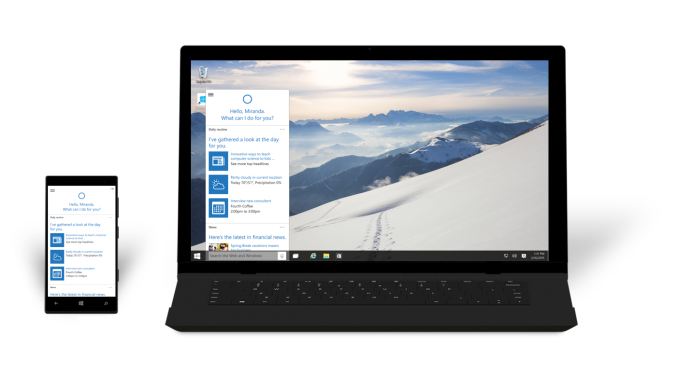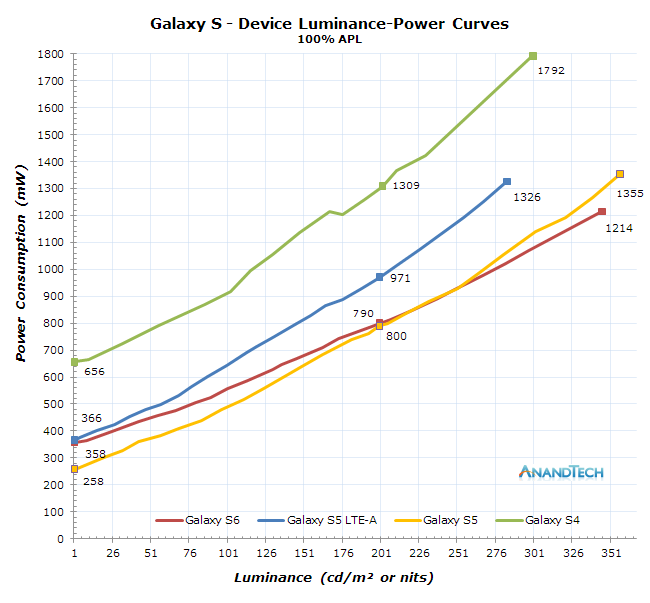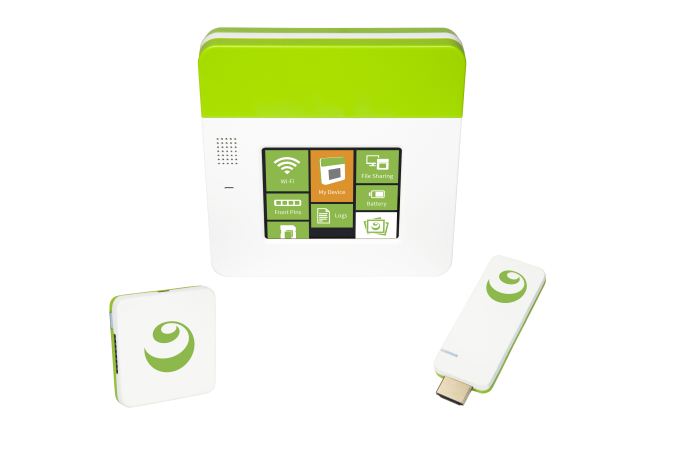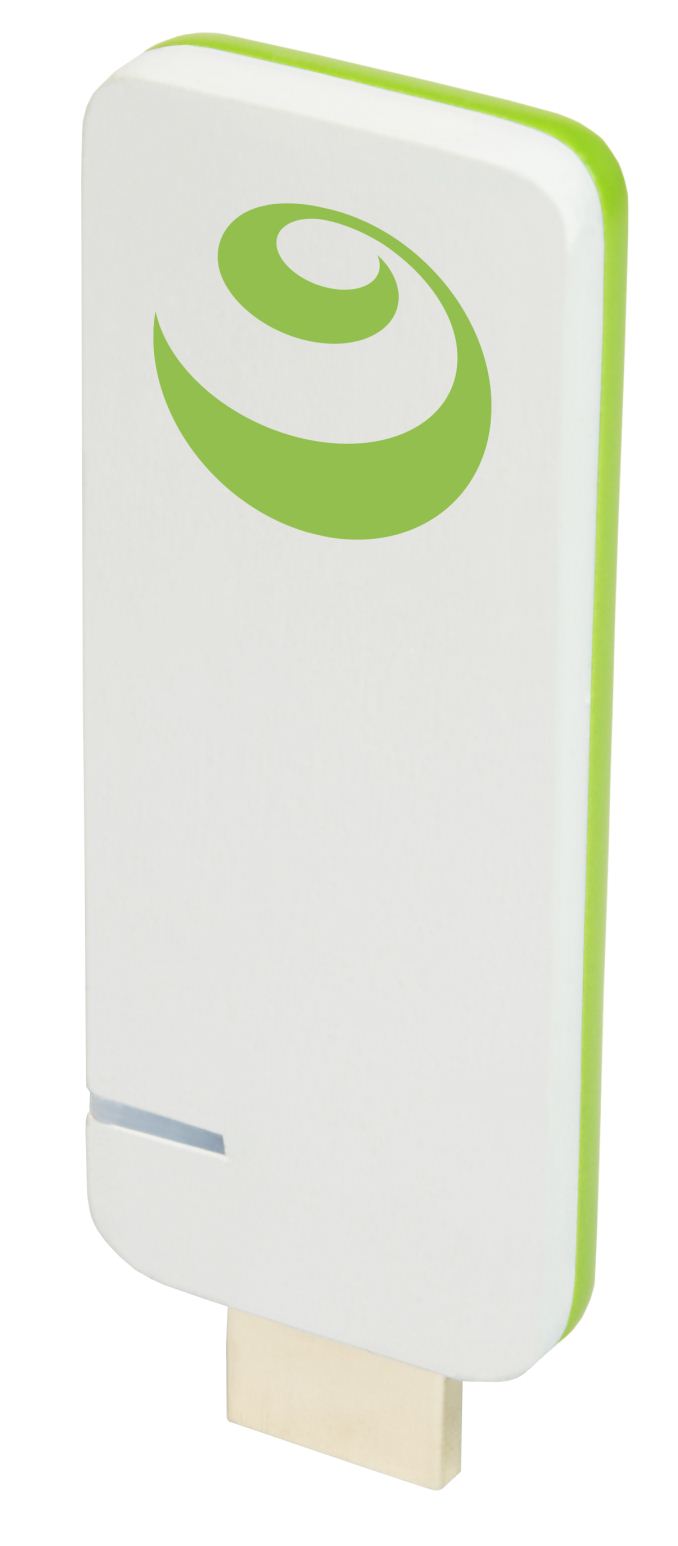Results 5,121 to 5,130 of 12096
Thread: Anandtech News
-
06-20-15, 09:30 PM #5121
Anandtech: Windows Insiders To Receive Full Windows 10
Yesterday, Gabe Aul, the head of the Windows Insider program, put up a blog post which answers one of the most asked questions regarding the ongoing Windows 10 preview program. How will Windows Insiders get access to the final release of Windows 10 as part of the free upgrade? The answer is pretty simple: be running the Windows 10 preview and be signed in with the Microsoft Account used to register as a Windows Insider.
Even better, once you have upgraded, you can then do a clean install of the operating system from an ISO and you will still be active. The product activation will be tied to your Microsoft Account.
In preparation for the final release, there will be some changes to the Insider Program and how updates are delivered, and it will prompt you to sign in with a Microsoft Account if you have not done so. However Mr. Aul was very clear to point out that once the final release is available, it will not be necessary to sign in with a Microsoft Account on any computer with Windows 10 pre-installed, or clean-installed from media. There will of course be functionality missing that is tied to the account, such as the ability to download apps from the Windows Store, but that choice will be left to the end user.
Also, and this has been said before, the Windows Insider program will continue even after Windows 10 launches on July 29th, so if you want to always have the latest programs and features, you can keep active and provide feedback as well.
If anyone is running the Windows 10 Enterprise preview edition, make note that this version will not be eligible for the free upgrade, since Enterprise requires a Volume Licensing agreement. If you are running Enterprise on a device that won’t require Enterprise after July 29th, it would likely be a good idea to reinstall the preview with the Pro version instead so that it will be updated to the full release.
I think there are a lot of people who keep wondering what the trick is going to be, with some people thinking that Windows 10 will require future payments, but the trick will be on Microsoft if they can’t get people to update to a common platform, since their entire model seems to be revolving around a common app platform and store. At Build, they stated they wanted Windows 10 to be on 1 billion devices in three years, and it really seems like they are serious about that with such a big reversal in pricing. For those that want to buy Windows 10 after July 29th, it will cost $119 for Home and $199 for Pro. Of course if you have a licensed copy of Windows 7 or 8, you will be offered the update for free for the first year.
Source: Windows Blog
More...
-
06-22-15, 08:01 AM #5122
Anandtech: The ASUS X99 Rampage V Extreme ROG Review
For a number of generations, each motherboard company has had its halo product that pushes boundaries and wallets. For ASUS, the Rampage IV Extreme, based on X79, was a resounding success for sales. We sourced the next chipset iteration, the X99 based Rampage V Extreme, for review to see if ASUS can follow the trend.
More...
-
06-22-15, 05:01 PM #5123
Anandtech: Samsung Launches Two FreeSync Capable UltraHD Monitors
Today Samsung launched two new UltraHD monitors with support for AMD's Freesync technology. AMD actually announced these monitors at their Future of Compute event last year, but there wasn't much information about them beyond the fact that they would be UHD panels and ship with Freesync support. As you may know, Freesync is AMD's alternative to NVIDIA's G-Sync technology to enable variable refresh rates on displays. We've talked about how this works and the implications it has, but the most significant benefit is that it can reduce stuttering and tearing when a game's frame rate isn't synchronized with the native maximum refresh rate of the display.
As far as these two displays go, they're two different sizes of UHD panels. However, while the 23.6" model is a PLS panel, the 28" model is a TN panel like the existing U28D590D which does not have Freesync. I've organized the most relevant specifications of both new displays below.
Samsung's U28D590D was really the first affordable 60Hz UltraHD monitor, and aside from the addition of Freesync support the U28E590D is essentially unchanged. To me, the U24E590D is the more interesting display. At 23.6" it's a fairly high density UltraHD monitor, and it's a PLS panel which will definitely outperform the 28" display when it comes to viewing angles and color shift. Samsung advertises 16.7 million color support but it's not clear if that's achieved through temporal dithering or if the panel actually has an 8bit color depth for each color channel. At $399 it's also extremely affordable, and undercuts Dell's P2415Q which has been one of the most affordable non-TN 60Hz UltraHD dsplays up until this point.U24E590D U28E590D Panel Size 23.6" 28" Panel Type PLS TN Resolution 3840 x 2160 Refresh Rate 60Hz Response Time (GtG) 4ms 1ms Viewing Angle (H/V) 178° / 178° 170° / 160° Inputs / Outputs 2 x HDMI (At least one is HDMI 2.0)
1 x DisplayPortNumber of colors 16.7 million 1.07 billion Color Gamut 100% sRGB Price $399 $599
The 28" U28E590D is available now for $599, and the smaller 23.6" U24E590D will be available for $399 on July 26th.
Source: Samsung via TechPowerUp
More...
-
06-22-15, 11:30 PM #5124
Anandtech: Windows 10 Insider Activation Update: Part 2
Just a couple of days ago, Microsoft put out a blog post outlining how Windows Insiders would be updated to the release version of Windows 10. Later, they updated their original post to change some of the wording, since it basically made it sound like anyone could use the Insider program to score themselves an activated license for Windows 10. The new verbiage was subtly different but the end result was even more confusion. Today, for the third time, the post has been updated to try and clarify again, and close the giant loophole.
Now, to clarify, all Windows 7 and 8.1 customers are eligible for a free upgrade to Windows 10. This free offer extends for one year from the launch of Windows 10 which will be July 29th. If you are running Windows 7 or 8.1, you are eligible. The end.
One common question though was what about the millions of people who joined the Windows Insider program and are running Windows 10 as pre-release software already? As of Friday, Microsoft’s Gabe Aul stated that they would also get an activated Windows 10 install as long as they were using the Microsoft Account that they joined the Insider’s program with. Apparently too good to be true often is, and the company has now completely changed the terms again.
There are now three scenarios (and once again this is ONLY for people running Windows 10 as an Insider) and each is handled slightly differently. Nothing can be easy it seems.
The first scenario is that you are a Windows Insider, and you want to stay in the program. After Windows 10 launches, the Insider program will continue, and there will be fast or slow rings for testers. The Insider builds are pre-release software and are activated with a pre-release software key. Eventually these builds will expire, however there will always be a new build with a new key before that happens. If you want to stay an insider after the launch, there is nothing to be done and you will continue to have an activated copy of Windows. However, from the post, there is one more point to add: “the Windows Insider Program is intended to be installed on Genuine Windows devices” so even though they are not checking, to be in full compliance, the device running the Insider preview of Windows 10 should be a licensed computer.
The second scenario is that you have upgraded your Windows 7 or 8.1 computer to the pre-release Windows 10 build, but when the final build comes around you want to exit the program. As long as you started with a licensed Windows 7 or 8.1 PC, your PC will remain activated.
The final scenario is if you want to exit the Insider program, but you are running Windows 10 from a clean install. In this scenario, you will be required to roll back to the original operating system, and then do the Windows 10 upgrade in order to get activated. Once activated, you can do another clean install if necessary.
There are of course more scenarios that have not been covered, and only time will tell what happens to those installs. For instance, on my desktop, I started from an upgraded 8.1 install, but due to some instability of apps, I wiped out my system and installed again from the Windows 10 ISO. Am I activated? I have no idea. I suppose I’ll find out on July 29th.
The Insider program has been pretty successful for Microsoft, however their communication is not always as successful. We can only hope that it improves over time.
I’ll sign this post off with a final quote from today’s post:
“This (The Windows Insider Program) is not a path to attain a license for Windows XP or Windows Vista systems.”
Source: Windows Blog
More...
-
06-23-15, 07:30 AM #5125
Anandtech: Analysing AMOLED Power Efficiency Improvements
Over the last few years we’ve been repeatedly reporting how Samsung was able to improve AMOLED power efficiency by employing better emitter materials on each new device generation. This went largely unverified as nobody really tried to accurately measure the actual power consumed by the screen. To rectify this situation, I went ahead to try to measure the screen power consumption of the last 4 generations of Galaxy S devices to get a better understanding just how much emitter improvements have contributed to screen and device battery efficiency.
AMOLED screens are emissive displays, meaning they emit light on their own without having to resort to backlights in transmissive technologies such as LCD screens. This causes white to be the most power-intensive colour for an OLED screen to display because it requires all sub-pixels to operate at high emission. The advantage of OLED screen though is that for dynamic content, the technology is able to save power in comparison to transmissive displays because only the pixels which are actually used are powered up.
Because white is a worst-case power scenario, it serves well as good representation of general efficiency gains in OLED devices. I've noticed that the power composition of the display consists of the sum of individual component’s power, and was able to verify this on the Galaxy S6: the sum of pure red, green and blue (in sRGB) was largely correlating with the power consumption of pure white when you take into account APL brighntess adjustments of the display.
To get a meaningful representation of efficiency of the displays, we chart the power curve of the Galaxy S4 (E5410), Galaxy S5 (S801), Galaxy S5 LTEA and finally the newest generation Galaxy S6 at different screen luminance points:
Immediately the Galaxy S4 sticks out as the most power consuming device of the last few generations. One has to keep in mind that most of this power is not due to the display itself, but due to the lack of Panel Self Refresh on past generation devices. PSR is able to achieve better power efficient in static screen scenarios by not re-sending frame-buffer information to the screen’s display controller IC. The DDIC instead buffers the screen contents on-chip and refreshes the screen matrix that way, enabling the SoC’s display controller pipeline to shut down and save on power.
Due to inconsistencies in SoCs, DDICs and general component efficiency, each device starts at a different power value at minimum brightness. For example the Galaxy S5 is able to post by far the best value in this metric as it will consume down to 258mW while idling at minimum brightness. The Galaxy S5 LTEA and Galaxy S6 will use a tad more at around 360mW each. This is likely due to the fact because of the heightened resolution of their 1440p screens compared to the 1080p screen on the Galaxy S5.
To be able to determine the efficiency of the OLEDs themselves though, we have to look at how the luminance curve behaves for each device. To do this, one has to adjust the power numbers to compensate for this base-power consumption:
We see a generational improvement in power efficiency for each new Galaxy S device, except the S5 LTEA. It seems that the switch to 1440p effectively brought itself with a loss in efficiency of the screen and the DDIC / base power consumption. We don’t know the details of the emitter materials used for each generation, but I’ve been told that power efficiency of a sub-pixel should theoretically go down relative to its size. The higher DPI density of the S5 LTEA might be reason for its efficiency degradation.AMOLED Screen Power Efficiency Device
Minimum
PowerDevice
Max Power
(Manual Br.)Luminance Power
at 200cd/cm²mW / cd / cm²
(Normalized to
5.1" screen)Galaxy S4 656 mW 1792 mW 653 mW 3.41 Galaxy S5 258 mW1355 mW 532 mW 2.66 Galaxy S5 LTEA 366 mW1326 mW 605 mW 3.02 Galaxy S6 358 mW1214 mW 442 mW 2.21 Note 4 452 mW1690 mW 665 mW 2.69
The Galaxy S6 offers the best evidence of new emitter and efficiency gains as it is even clear in the luminosity curve graph how even though the S6’s base power consumption is higher, it is able to catch up this to this difference and surpass the Galaxy S5 at higher brightness levels. The comparison with the S5 LTEA is the most interesting as both devices sport a 5.1” 1440p display making them perfect for an apples-to-apples comparison. Here the S6’s new display is able to exhibit a substantial 36% improvement in power efficiency.
While the generational power efficiency gains compared to older AMOLED devices is interesting, the question remains if the newest displays are now able to match up to LCD panels in terms of efficiency at high APL values.
To get a better idea how power scales depending on APL, grey-scale various colours, I went ahead graphed over 239 measurement points on several display scenarios on the Galaxy S6.
Expectedly, we see white being the obvious most power consuming colour as it requires high intensity on all colour components. We again see the interesting behaviour of black and white patterns summing up to a certain %APL consume much more power than an equal grey-scale or mixed image at the same APL. As explained in our review of the Galaxy Note 4 Exynos, this is due to voltage scaling of the intensity levels of the sub-pixels. Actual brightness of the display is controlled by pulse wave modulation on top of the component voltage scaling mechanisms.
I’ve yet to measure more LCD devices to get a better picture of various panel manufacturers and screen technologies, but if we take for example the Huawei P8’s panel we can calculate a luminance-power of 332mW at 200cd/cm². Over the Galaxy S6’s AMOLED screen this still represents a 33% advantage for the LCD technology when displaying white and high level greyscale colours. To reach an equivalent amount of efficiency on the S6 one would have to have about less than 65-70% of solid white in the picture. Unfortunately Android interfaces are still dominated by high APL and white elements, so AMOLED will still trail LCDs in most default UI scenarios when it comes to luminance power. As long as white is avoided, the S6 can already claim it is more efficient than LCD devices in all other scenarios as the break-even point now reaches ~85% greyscale.
The good news though is that this gap keeps decreasing with each generation and the disadvantage is limited to pure white background content. Having even slightly grey or coloured content will start shifting the scales back in favour of AMOLED devices. Running dark themes and dark backgrounds can really be advantageous for AMOLED device as they are able to achieve factors of 3-4x in luminance-power advantage over LCD devices.
I would say that Samsung still needs to achieve another 15-20% improvement in power before AMOLED is consitently more efficient than LCD devices in even the worst-case APL and high white-percentage scenarios. Given the last generational improvements and if Samsung keeps resolution constant, this seems to be an achievable goal for next year as long as emitter research and development continues to advance at the current pace.
More...
-
06-23-15, 08:01 AM #5126
Anandtech: The Intel Xeon D Review: Performance Per Watt Server SoC Champion?
Eight 14nm Broadwell cores, a shared L3-cache, dual 10 gigabit MAC, a PCIe 3.0 root with 24 lanes and a lot more find a home in Intel's most powerful server SoC ever, the Xeon D-1540. Thanks to Supermicro's 5028D-TN4T superserver, we are able to compare the latest Xeon with the Atom C2000 SoC, low power Xeon E5s and the Xeon E3-1200 v3.
More...
-
06-24-15, 07:08 AM #5127
Anandtech: The ASRock X99E-ITX/ac Review: Up to 36 Threads in 17cm2
When things get smaller, compromises have to be made. We've seen this recently in our Core-M deep dive where building a cheaper chassis yields few benefits. In the PC space, the mini-ITX form factor has held a level of fascination for small builds, so it was only a matter of time before someone built an ITX motherboard for the most extreme platform. Some compromises were made, but ASRock delivered and we were sent the X99E-ITX/ac for review.
More...
-
06-24-15, 07:08 AM #5128
Anandtech: Marvell Announces New Kinoma IoT Prototyping Platforms
Today Marvell announces two new internet-of-things (IoT) hardware prototyping platforms as part of their Kinoma "JavaScript-powered Internet of Things construction kit" lineup. The Kinoma Element and Kinoma HD provide alternatives to the Kinoma Create that was released last year.
The Element comes in a standalone square form-factor which I estimate should be about 7x7x1 cm. Marvell was unfortunately not able to share the exact dimensions of the piece but it looks compact enough given that it comes in a closed form-factor. The device is powered by microUSB port and has two expansion ports on opposite sides with 8 pins each that can be used for digital GPIO or analog ports and can be re-routed and re-configured by software.
The piece is powered by Marvell's MW302 WiFi-SoC microcontroller uses an ARM Cortex M4F at 200MHz and has 512KB of SRAM memory which serves as the platform's main memory. In terms of connectivity the device is capable of 802.11b/g/n but only in the 2.4GHz band and supports transfer rates of up to 72Mbit/s although those rates will in practice be probably be limited by the CPU's performance.
The device is able to make due with so little memory by employing execute-in-place (XIP) which is a method of executing code directly on it's SRAM storage instead of copying it to separate dedicated memory. The Element is able to run JavaScript byte-code as Marvell has implemented XIP in their new XS6 JavaScript engine.
The Kinoma HD is a beefier platform in the form of a HDMI dongle. The specifications are a tad higher as it is able to take advantage of a more powerful Marvell 88DE 3006 SoC running two ARM Cortex cores at 1.2GHz. We're still not sure what CPU we're talking about here but given it's part of the Armada 1500 family of SoCs we're likely looking at a Cortex A9 design.
As opposed to the Element, the HD runs a more conventional OS as it comes with a Linux distribution. It has 256MB of RAM and connectivity is provided by 802.11g/n/ac WiFi. The HDMI output is capable of 1080p and 720p resolutions.
Part of today's announcement was also the release of Kinoma's new JavaScript engine, the first independent implementation of JavaScript 6th edition scripting language. In conformance suites the XS6 engine is able to achieve 96% completeness for JavaScript 6th edition far ahead of any other JS engine. On the Kinoma platform JS6 among many language improvements also is able to provide up to 4x speed improvements for application start-up and now offers efficient binding to native C code and connect to OS and hardware features, which is something that is crucial for the KinomaJS development framework.
In the words of Peter Hoddie, VP at Marvell and former CEO of Kinoma before its 2011 acquisition:
“The software tools used to develop embedded hardware products typically lag leading edge software development by many years. IoT developers want the benefits of the latest language improvements, but the memory and CPU performance requirements put it out of the reach of mass-market hardware. With the XS6 engine in KinomaJS, we are bringing the latest advances in JavaScript to embedded developers before they arrive on the web,”
The Kinoma products thus represent a very low entry-barrier for IoT development and low time and resource investment to get a working prototype application running. Most importantly, it's the price of the new products that may be most attractive as the Kinoma Element and HD come at an MSRP of respectively US $19.95 and $24.95 and can be pre-ordered now with retail availability in Q4 2015.
More...
-
06-24-15, 02:01 PM #5129
Anandtech: Microsoft Brings Office to Android Smartphones
Today Microsoft announced that their line of Office applications has made its way to Android smartphones. After launching the first touch-optimized version of Office on the iPad, Microsoft has gradually been building out support for Android. It began with Office for Android first launching as a preview for ARM based tablets running KitKat, with the final release working on Lollipop. Shortly after, Microsoft began supporting Android tablets that use Intel processors, like the Dell Venue 8. Throughout all this, support for Android phones was still absent. With some Android devices having screens that are 6" or even larger, creating a version of Office for them actually made a lot of sense.
With today's release, Microsoft now supports essentially every Android device. Whether your screen is big or small, and your processor ARM or Intel, you'll be able to use Office on your Android device. Microsoft's partnerships with phone manufacturers mean that these apps will also come preloaded on many future smartphones and tablets.
More...
-
06-25-15, 01:00 AM #5130
Anandtech: ECS To Remain in Motherboard Market: Dispels Rumor
As active members of the PC components industry, we tend to try to keep our ear to the ground relating to how the different companies are approaching their product lines especially in terms of acquisitions, applications, marketing and projections. Most of what we hear is either not news or not entirely relevant for publication but helps us attempt to form a more complete picture when we do publish. One of the reasons we do this is to do with confirming sources, and making sure we publish as accurately as possible. So when a rumor started in the sphere regarding ECS’ motherboard business being moved away from the commercial side of the equation (from Digitimes and others), remaining in only OEM/ODM applications, I naturally went straight to the heart of the matter and contacted ECS for clarification. The following is a letter from Sunny Yang, ECS’ President.
Dear Our Distinguished Customers,That essentially confirms that ECS will be staying in the consumer motherboard business. Personally I felt the news was a little off to begin with – at Computex ECS were showing their own brand 100-series motherboards, and even developing them with Realtek’s new Dragon network chip which is designed to go in direct competition with Killer. While it's not unheard of for big companies to pull product lines at the last second, we meet with ECS every year and the ECS Computex booth is naturally very large and they often put on a large show for it. It's important to consider how much money and marketing has been pumped into ECS’ L33T gaming brand in recent years along with their eSports sponsorship.
We feel regret to learn the untrue report from DIGITIMES pertaining to “ECS to quit own-brand DIY motherboard business, say Taiwan makers” on Jun. 24, 2015. We like to formally clarify that ECS would never give up any opportunity to work on own-brand DIY motherboard as what we always commit to our valuable customers.
We all learn the knee competition in motherboard industry. To receive the challenge, ECS has made all the efforts to manage our own brand motherboard and create more service and value to our channel customers for years. We would continue to put more resources to provide cutting edge products and marketing events as what we just announced at Taipei Computex in early June and, therefore, enhance our brand value and your confidence level.
ECS has been cooperating with you for many years, we treasure this relationship. We will also do our best to serve your needs through our global structures. We believe, through our close cooperation, a mutually beneficial result can be achieved in a long-term relationship.
Sincerely Yours.
Sunny Yang
President, Elitegroup Computer Systems Co., Ltd.
ECS as a brand does have a presence in the United States, and we’ve reviewed some interesting samples such as the Lucid Hydra equipped P67H2-A back in 2011 and the only overclockable AMD E350 mini-ITX board on the market, the ECS HDC-I. To this end, the latest figures we have estimated for ECS own-brand motherboard sales are around 3-4 million, which accounts for around 5% of the ~78 million motherboards a year market, but in 2009 reports have suggested they sold 17 million both as a brand and as an OEM/ODM which gives you a sense of scale as to how big ECS actually is. ECS’ main revenue generator is the OEM/ODM side, particularly in manufacturing many mini-PCs for other well-known brands, but their own brand still has value particularly in Asian regions and as the letter above shows, they are still keen on putting it into action.
More...
Thread Information
Users Browsing this Thread
There are currently 56 users browsing this thread. (0 members and 56 guests)







 Quote
Quote

























Bookmarks